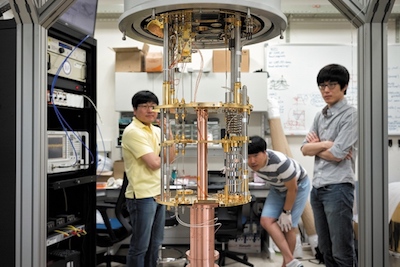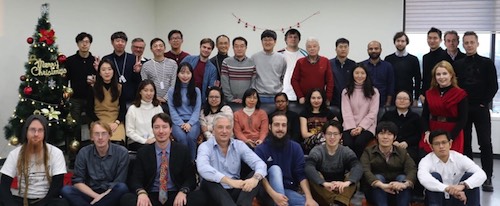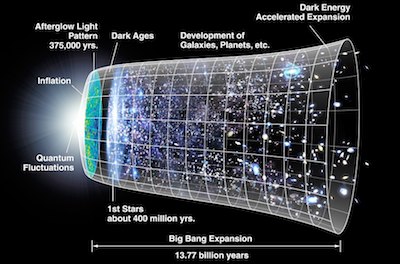Dear KUSP 2019 participants,
We welcome you to an exciting summer school in South Korea at the Institute for Basic Science (IBS). KUSP, the Korea Undergraduate/graduate/high-school Science Program, is designed to attract young researchers from all over the world, bring them together to tackle interesting physics projects, learn and have fun. For the first two weeks the students will follow physics lectures, and in the afternoon they will have hands-on experience either in the lab or with computer simulations working with IBS researchers. The next two weeks will include more extensive lab work and the final week the students will be writing or finishing up their reports as well as their posters. This program is a lot of fun and very interesting, offering a very fulfilling research experience. Get immersed in it, get involved, get messy, investigate, learn, have fun and be safe.
The KUSP was initiated in the summer of 2015 by the Center for Axion and Precision Physics Research of Institute for Basic Science (IBS/CAPP) and has continued for four summers very successfully with participants from many different countries. In particular, the two other IBS research centers, Center for Underground physics (IBS/CUP), and Center for Theoretical Physics of Complex Systems (IBS/PCS) have decided to join the KUSP in the summer of 2019 to offer the research opportunity to a limited number of students in particle and material physics, and related natural science disciplines from all around the world. The Center for Theoretical Physics of the Universe (IBS/CTPU) is also supporting KUSP 2019.

Center for Axion and Precision Physics Research
CAPP aims to launch a state of the art axion dark matter experiment. CAPP will also play a leading role in the proton electric dipole moment experiment and will participate in other axion, dark matter, EDM, muon g-2 experiments around the world.
The latest measurements indicate that dark matter constitutes about 27% of the energy in the universe. Among the leading dark matter candidates are particles such as axions, and weakly interacting massive particles (WIMPs), e.g., the lightest supersymmetric particle. (WIMP searches are the subject of several groups around the world including the IBS Center for Underground Physics in Korea.) Axions were postulated to solve an embarrassing problem in strong interactions: even though the theory of strong interactions predicts a large violation of certain symmetries (P-parity and T-time reversal), the limit on the electric dipole moment (EDM) of the neutron is already too small, some ten orders of magnitude smaller than expected.
A massive axion is excluded by several experiments and astrophysical limits. A prominent Korean theorist prof. Jihn E. Kim suggested that a light-mass axion would also work as well. The light axions have to advantage that they could constitute the dark matter of our universe. It is currently believed that axion masses between 10-3 meV and 1 meV could be ideal dark matter candidates. Depending on their mass, there could be about 1014axions/cm3, to fill the dark matter density quota of about 0.3GeV/cm3.
CAPP will explore the axion. Our first aim is to use a method suggested by Prof. P. Sikivie, to convert the axions into microwave photons inside a large volume, high magnetic field, and a high quality microwave cavity. We are also exploring different geometries that can prove to be advantageous. The axion microwave experiment is going to be launched at the KAIST campus top of the line equipment and technology. The expected conversion rate is very small, of order 10-23W, making it the faintest signal possible in a realistic experiment.
In addition, the center is going to play a leading role in the storage ring proton EDM experiment to improve the sensitivity by several orders of magnitude down to 10-29e.cm, making it the best hadronic EDM experiment in the world. A successful proton EDM experiment could help explain the matter-antimatter asymmetry mystery of our universe.

Center for Underground Physics
We now know that neutrinos are massive but we have yet to determine their absolute masses and nature. Discovering these important unknowns can be related to leptogenesis theories that make attempts to explain particle-antiparticle asymmetry in the universe. Neutrinoless double beta decay experiment is the most practical approach for determining the absolute masses and understanding the nature of neutrinos. At the Center for Underground Physics (CUP) at the IBS, we will perform several phases of AMoRE (Advanced Mo-based Rare process Experiment) experiments that probe the neutrino mass down to 0.03 eV.
Advancing our knowledge of dark matter is necessary in order to understand the origin and structure of the universe, because the universe consists of 26.8% dark matter and 68.3% dark energy. We are running experiments to search directly for WIMPs (Weakly Interacting Massive Particles), which offer the most plausible explanation as to the nature of dark matter. We will develop new detection techniques to search for dark matter, which would provide more sensitive results than currently running experiments.
We will install detectors with ultra-low noise at a depth of approximately 700 meters at our underground laboratory in Yangyang in Korea to reduce background cosmic rays to search for extremely rare events such as neutrinoless double beta decays, dark matter, etc. Since we expect to see only a handful of signal events per year, the success of the experiments highly relies on reducing background interference. We will achieve our goal by growing ultra-low background crystals and by developing low-temperature sensors that have excellent energy resolution and the power to distinguish the signals from huge background events.

Center for Theoretical Physics of Complex Systems
Today the eyes looking for novel technologies and new generation devices focus on nano- structured materials with unprecedented electrical, mechanical, optical and other properties like graphene, nanotubes, quantum dot arrays, metamaterials, trapped atomic condensates, superconducting networks, plasmonic and nanophotonic structures. There is an increasingly strong demand for new theoretical concepts, approaches and computational tools for uncovering fundamental nonlinear and quantum many-body processes in such systems and designing efficient methods of their control.
Our center aims to take up the grand challenge and to create a world-class laboratory for the nonlinear classical and quantum dynamics of nano-structured systems, and to conduct cutting edge research on phenomena at the interfaces of applied and computational theoretical condensed matter physics and optics. We aim to cross-fertilize research on exciton-polariton condensates, superconducting networks, quantum dot networks, ultracold atomic gases, optical waveguide networks, topology, frustration, flatband physics, Fano resonant nanoscale devices, artificial gauge fields, quantum ratchets, many body localization, disorder against interactions, artificial quasicrystals, nonintegrability, deterministic chaos, Arnold diffusion, KAM, coherence and decoherence, quantum stochastic dynamics, finite systems, targeted energy transfer, transport in nano structures, nonlinear naophotonics, topological insulators, and more.
An efficient Visitors and Workshop Program will ensure finest research and training standards thus developing the center into a leading institution able to successfully compete within a quickly globalizing science network. By becoming a meeting hub for the global scientific community the center will offer to young scientists an excellent research environment and connections with the worldwide leaders in a broad variety of emerging research fields.

Center for Theoretical Physics of the Universe
The IBS Center for Theoretical Physics of the Universe carries out research on particle physics and cosmology, which aims to understand nature at the most fundamental level and answer the questions about the origin of the universe.
The Standard Model of particle physics and Einstein's General Relativity provide an accurate description of almost all known physical phenomena over the scales from the subnuclear to the cosmic. However there are many reasons to believe that the Standard Model and General Relativity are not the final story, but merely a kind of approximation to a more fundamental theory. Astonishingly the most compelling reason comes from cosmic observations: the existence of dark matter and matter-antimatter asymmetry in the universe, which can not be explained by the Standard Model. As another compelling reason, the naturalness argument for electroweak symmetry breaking in the Standard Model suggests a possibility of new physics at energy scales around TeV. The quest for unification and a theory of quantum gravity also lead us to speculate about more fundamental theoretical frameworks such as grand unification and string theory.
The prime theme of our research is new physics beyond the Standard Model of particle physics, which can provide an answer to the following questions:
We are living in a very exciting era for particle physics and cosmology. What is the next fundamental theory that underlies the Standard Model of particle physics? We may be able to uncover it in the near future.
Professor Yannis K. Semertzidis
Director of the Center for Axion and Precision Physics Research (IBS/CAPP)
Korea Advanced Institute of Science and Technology
Professor Yeongduk Kim
Director of the Center for Underground Physocs (IBS/CUP)
Professor Sergej Flach
Director of the Center for Theoretical Physics of Complex Systems (IBS/PCS)
Professor Kiwoon Choi
Director of the Center for Theoretical Physics of the Universe (IBS/CTPU)
Korea Advanced Institute of Science and Technology
Privacy policy (in Korean): https://www.ibs.re.kr/kor/sitemap_19.do
Email: kusp@ibs.re.kr